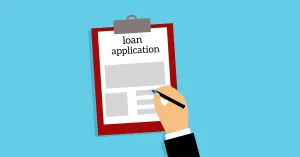Like all businesses, along with new chances at opportunities, there come pitfalls as well. That is life. You can not take pitfalls without taking chances. Private lenders, especially new and small lenders, need to be apprehensive of both openings and pitfalls. Changing request conditions can bring great openings for private lenders as long as they're apprehensive of the risks to avoid. While private credit investing isn't a new option for businesses, the current state of the lending request is shining new light on it. For investors, this provides further openings to expand their investment portfolio and conceivably gain an advanced rate of return. still, along with these openings, indeed the brightest most smart investor should always be on the lookout for pitfalls to their business. In this composition, we will take a look and the pitfalls and openings presented to private lenders in 2024. First, let's look at current opportunities.
Opportunities for Private Lenders and Positive Aspects of the Industry in 2024
- When borrowers are lamenting the biggest fallout from the most rapid-fire rise in interest rates in four decades, this creates a terrain for private lenders to use to their advantage. We see openings for private credit investors to give capital in three ways to banks – which are still forming loans, however on a far lower scale; to nonbank lenders; and directly to borrowers. The wide variety of loans and borrower types offers potentially deep diversification, historically generating low investment return correlations to requests, frugality, and one another.
- Now is the perfect time for investors to begin a private lending practice. Fortune Builders has this great ultimate guide for new lenders getting started.
- Private lenders aren’t constrained by geography. However, chances are other areas of the country are maintaining or expanding economically. Lenders can pick and choose borrowers accordingly.
- Leaning into the value a small lender can bring to a deal other than rate and terms will produce reprise business from borrowers who appreciate those fresh services and connections.
- When deal inflow is down, there may be openings to mate on deals you don’t have experience with. Private credit openings are arising, gauging performance to nonperforming credit in both public and private debt. Importantly, the current dynamics are furnishing lenders an occasion to appear and acquire loans secured by advanced-quality collateral, with stricter loan covenants, at lower loan-to-value rates with an advanced all-in return eventuality.
- The unknown pace of interest rate hikes and performing volatility are furnishing abundant implicit openings in the liquid public requests now, and private openings are beginning to materialize in request areas where underwriting has come lax. Hard lending gives investors the chance to stay active in real estate without inescapably adding a property to their portfolios. Some hard lenders may not have to buy a property themselves at all. This can be a huge prerequisite for anyone without the time and coffers to acquire a real estate deal, as it allows lenders to tap into the economic eventuality of real estate without “ getting their hands dirty, ” so to speak.
- The request rates for lower lenders aren't generally held against some standard index. However, lower balance distance private lenders probably won’t see a significant rate reduction for their loan products compared to current interest rates, If interest rates do fall in the future. numerous homeowners and investors have locked in historically low rates that they see significant value in keeping.
Refinancing that low-rate debt is generally the last thing they want to do because they know they can not get a rate anywhere near to their being one. This has created a significant demand for alternate-lien loans. Investors taking parcels “ subject to ” from worried homeowners are laboriously seeking out private lenders to give finances for the sale(e.g., closing costs, catching up on the mortgage, repairs, or cash to give the dealer to walk down). numerous new lenders may be approached or drawn into these openings because they generally offer a veritably seductive interest rate and have a lower loan interest rate. There's a growing need for deliverance capital both at the asset and holding company position. This is creating seductive openings to give ground capital in the form of favored equity and mezzanine debt.
Threats and Pitfalls Private Lenders Should be Apprehensive of in 2024
- Since private lending laws are state-specific if you do jump to a new state, make sure you're apprehensive of the conditions for licensing and usury compliance. Alternate-lien products are a lesser threat. This type of loan in the current profitable climate can be veritably built by a private lender a goldmine.
- Lending as an alternate-lien lender requires expansive knowledge to alleviate threats and duly assess situations. All private lenders should do their due diligence before creating loans.
- Lending a second-lien borrower may have fresh underwriting criteria that may not be present with a first-lien loan.
- Hard lending also has an essential degree of threat for the lender. By operating outside of the traditional loan operation process that big banks use, hard money lenders can truly choose who they work with. But this can also be threatening to an investor when creating a loan out of the scope of banks and other traditional avenues of borrowing. To offset this threat, hard money lenders must come up with norms of their own.
- Lenders should be prepared to probe investors, and parcels and eventually trust their gut feeling about an implicit seeker. Private credit enterprises could face pressure not to declare a private equity loan in dereliction for fear of alienating their stylish guests. That’s particularly worrisome since the big fiscal guarantors regard so important of numerous lenders ’ business. directors might also seek to lower their reported dereliction rate by letting worried companies extend loans.
- Private lenders might also seek to lower their reported default rate by allowing less risky clients to obtain loans.
- The biggest threat facing direct lenders, though, is the flood of money that has flowed into the sector from investors seeking more attractive returns. More of their loans now come without covenants that test leverage regularly, making it harder for creditors to control struggling companies. The emergence of recurring revenue-based loans is potentially another sign of excessive risk appetite.
- Private debt returns on investment are directly related to the business's success. Therefore, capital decay can impact the value of your investment and put you at greater risk. For example, if the company is unsuccessful, it may default on the loan.
- Keep in mind that typically, businesses seeking out private credit have been denied lending by other financial institutions. This factor means that these companies may have weaker credit profiles and therefore are at a higher risk of defaulting on the loan. Quickly convert your possible borrower's bank statement into a PDF, and also investigate to find out what kind of credit they have.
- While private credit investing can provide excellent returns, it can often be a very complex and risky investment opportunity.
As you can see, being able to look ahead and see where the lending landscape is moving is crucial. There have been, and likely continue to be, significant capital inflows in the private lending industry. Knowing what needs to be done to be a more successful private lender and executing well is critical, especially in times when valuations may be falling or deal flow is low. Talk to other lenders and network with vendors and borrowers to gain insights about what’s happening in your market. Remember what makes your business an advantage to borrowers and always use that knowledge to your best advantage.
Sources:
- https://aaplonline.com/articles/market-trends/5-opportunities-and-threats-for-small-private-lenders/
- https://www.fortunebuilders.com/becoming-private-money-lender-part-1/
- https://www.pimco.com/en-us/insights/viewpoints/opportunities-in-private-credit-stepping-in-as-banks-step-out/
- https://www.forbes.com/sites/forbesfinancecouncil/2023/03/30/private-credit-investing-current-opportunities-and-risks/





















Add comment